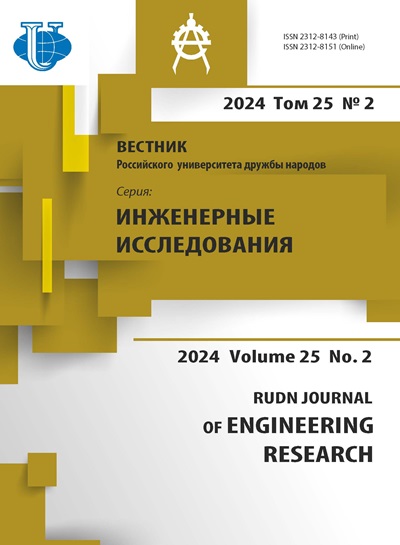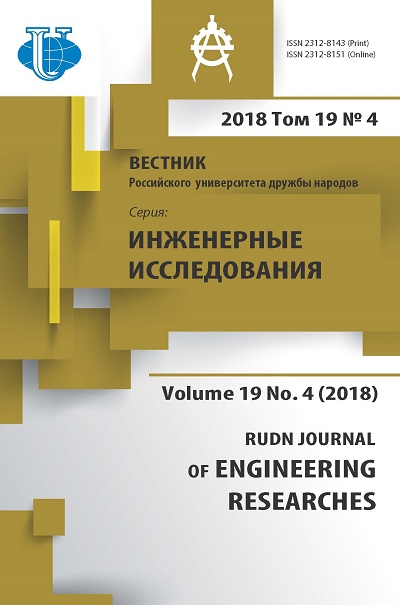Special aspects of catagenetic sulfate accumulation in Permian sedimentary sequences of Central Russia
- Authors: Georgievskiy A.F1, Bugina V.M1
-
Affiliations:
- Peoples Friendship University of Russia (RUDN University)
- Issue: Vol 19, No 4 (2018)
- Pages: 503-512
- Section: Innovative use of mineral resources
- URL: https://journals.rudn.ru/engineering-researches/article/view/20601
- DOI: https://doi.org/10.22363/2312-8143-2018-19-4-503-512
Cite item
Full Text
Abstract
The scope and the role of the secondary (catagenetic) processes in sedimentary-rock formation belong to the category of incompletely resolved and, therefore, the urgent problems of lithological science. The purpose of this work was to show, by means of stadium analysis, the huge “hidden” potential of catagenetic processes in the transformation of the mineral composition of sedimentary strata on the example of sulphate complexes. Boundary clay and carbonate sediments of Urzhumskiy and Sakmarskiy stage of Western limit of the pre-Ural trough were selected as the objects of study. It was found that their lithological appearance has been largely shaped by secondary (diaand catagenetic) processes of sulfate mineralization. And, if the first is reflected in the development of scattered concretionary nodules of gypsum, the latter manifested in large-scale metasomatism with the formation of large anhydrite-gypsum and gypsum-anhydrite lens and tabular bodies, stretching for hundreds of meters. It’s possible that metasomatic solutions were very reactive and moved with underground waters. Those solutions were as aggressive as lateritic weathering, and replaced not only the carbonates, but clay and ferrous minerals as well as quartz and feldspar detritus. All of this points to the high alkalinity and to the reducing atmosphere of sulphate of metasomatic solutions.
About the authors
Alexey F Georgievskiy
Peoples Friendship University of Russia (RUDN University)
Author for correspondence.
Email: georgievskiy_af@rudn.university
SPIN-code: 1308-9195
Doctor of Geology and Mineralogy, Associate Professor of the Department of Mineral Developing and Oil & Gas Engineering of the Engineering Academy
6 Miklukho-Maklaya St., Moscow, 117198, Russian FederationViktoriya M Bugina
Peoples Friendship University of Russia (RUDN University)
Email: bugina_vm@rudn.university
SPIN-code: 8410-3861
PhD in Geology and Mineralogy, Associate Professor of the Department of Mineral Developing and Oil & Gas Engineering of the Engineering Academy
6 Miklukho-Maklaya St., Moscow, 117198, Russian FederationReferences
- Gosudarstvennaja geologicheskaja karta Rossijskoj Federacii. Masshtab 1:1 000 000 (novaja serija) [State geological map of the Russian Federation. Scale 1:1 000 000]. List O-37,(38) (Nizhnij Novgorod). Saint Petersburg: VSEGEI Publ., 1999.
- Yapaskurt O.V. Stadium analysis of sedimentary process. Lithology and mineral resources, (4), 2008, 364—376. (In Russ.)
- Fersman A.E. Geohimija Rossii [Geochemistry of Russia]. Petrograd: Teh.-сhеm. izdat. Publ., 1922. 214.
- Valjashko M.G., Polivanova A.I., Zherebcova I.K. Jeksperimental’noe issledovanije peremeshhenija rastvorov raznogo udel’nogo vesa v poristyh porodah v svjazi s vertikal’noj gidrohimicheskoj zonal’nost’ju [Experimental study of different unit weight solutions’ movement in porous rocks and their dependence of vertical hydrochemical zonality]. Geochemistry, 1963, (3), 312—326. (In Russ.)
- Holodov V.N. Novoe v poznanii katageneza [New facts in the knowledge of catagenesis]. Lithology and mineral resources, 1982, 3, 3—22. (In Russ.)
- Mahnach A.A. O global’nom razvitii galogennoj katageneticheskoj mineralizacii osadochnyh porod pod jevaporitovymi formacijami [About the global development of halogen catagenetic mineralization of sedimentary rocks under evaporite formations]. Lithology and mineral resources, 1982, (3), 59—66. (In Russ.)
- Bezborodov R.S. Kratkij kurs litologii [Brief Lithology course]. Moscow: Patrice Lumumba University, 1989, 314. (In Russ.)
















